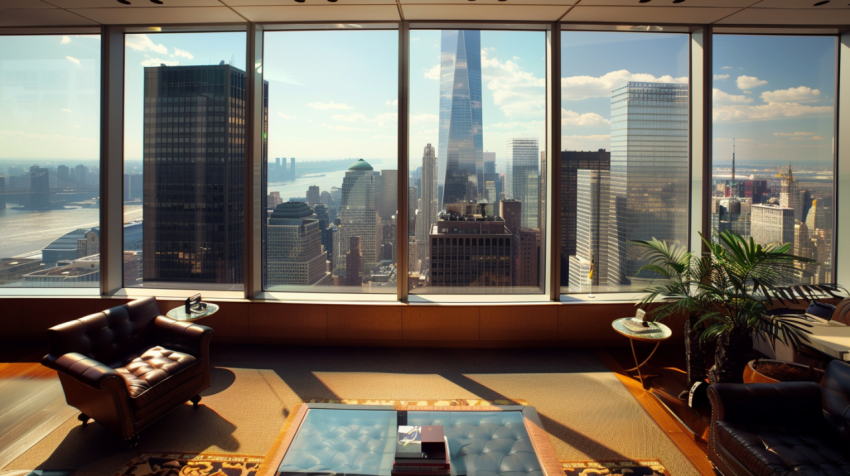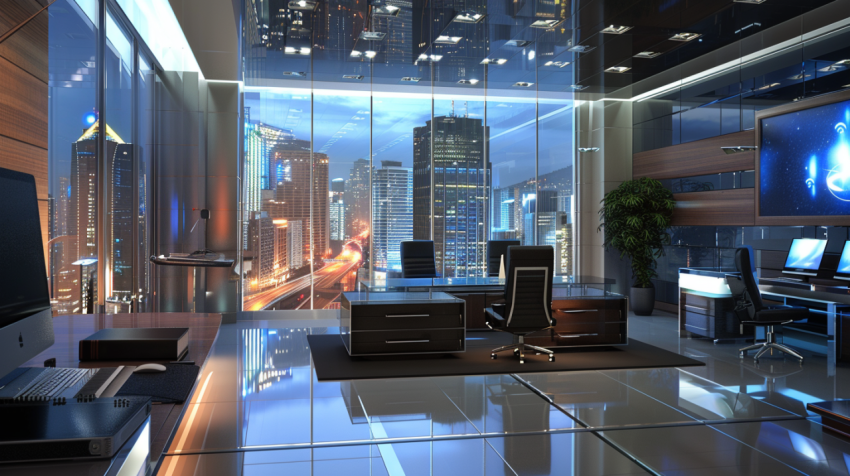











The Evolution of the Corporate Office: From Cubicles to Collaborative Spaces
-
The corporate office, the physical embodiment of a company's identity and operations, has undergone a dramatic evolution over the past century. From the rigid, hierarchical layouts of the early 20th century to the open, collaborative spaces of today, the design of the office has been shaped by changing work styles, technological advancements, and a growing understanding of the impact of the work environment on employee productivity and well-being. This article explores the fascinating journey of the corporate office, examining the key trends and innovations that have transformed the way we work.
Early Offices: The Rise of the Bureaucracy
The modern office emerged in the late 19th and early 20th centuries, driven by the growth of large corporations and the rise of administrative work.
- The Larkin Building: The Larkin Administration Building, designed by Frank Lloyd Wright in 1906, is considered a pioneering example of modern office design. It featured an open plan, a central atrium for natural light, and air conditioning.
- Taylorism and Scientific Management: The principles of scientific management, pioneered by Frederick Taylor, influenced early office layouts. Offices were designed to maximize efficiency, with workers often arranged in rows of desks under close supervision.
- The Bullpen: The bullpen, a large, open room filled with desks, became a common feature of early offices. This layout facilitated communication and supervision but offered little privacy.
The Mid-20th Century: Cubicles and the Action Office
The mid-20th century saw the rise of the cubicle, a semi-enclosed workspace that offered a degree of privacy and personalization.
- The Action Office: Robert Propst, working for Herman Miller, developed the Action Office system in the 1960s. This modular system, featuring panels of varying heights and configurable workstations, aimed to create a more flexible and adaptable office environment.
- The Cubicle Farm: The Action Office system, while intended to promote flexibility, often resulted in the creation of cubicle farms, vast expanses of uniform cubicles that were criticized for being isolating and dehumanizing.
- The Rise of Corporate Culture: As corporations grew larger and more complex, the office became a reflection of corporate culture and identity. Office design began to incorporate branding elements and company values.
The Late 20th Century: Technology and the Open Plan
The advent of personal computers and the internet began to transform the way people worked, leading to new approaches to office design.
- The Impact of Technology: Computers reduced the need for paper-based filing and storage, freeing up space in the office. The internet enabled remote work and communication, blurring the boundaries of the traditional office.
- The Return of the Open Plan: The open plan office, with its emphasis on collaboration and communication, gained popularity. Open plans often featured low or no partitions between workstations, creating a sense of openness and transparency.
- Hot-Desking and Flexible Workspaces: Hot-desking, where employees do not have assigned desks but choose a workspace on a first-come, first-served basis, emerged as a way to optimize space utilization and accommodate flexible work arrangements.
The 21st Century: Collaboration, Well-being, and Sustainability
In the 21st century, office design is increasingly focused on fostering collaboration, promoting employee well-being, and embracing sustainability.
- Collaborative Spaces: Modern offices feature a variety of collaborative spaces, such as breakout areas, huddle rooms, and informal meeting areas, designed to encourage interaction and teamwork.
- Focus on Employee Well-being: Companies are recognizing the importance of employee well-being and are incorporating features like natural light, ergonomic furniture, and biophilic design (bringing nature into the office) to create healthier and more inspiring work environments.
- Activity-Based Working: Activity-based working (ABW) is a design philosophy that provides employees with a choice of work settings suited to different tasks, such as focused work, collaboration, or learning.
- The Rise of the Agile Workplace: The agile workplace is designed to be flexible, adaptable, and responsive to changing business needs. It often incorporates features like modular furniture, movable walls, and technology that supports remote work.
- Sustainable Office Design: Green building practices, such as using sustainable materials, reducing energy consumption, and improving indoor air quality, are becoming increasingly common in office design.
The Impact of Remote Work and Hybrid Work Models
The COVID-19 pandemic accelerated the adoption of remote work, leading to a rethinking of the role and design of the corporate office.
- The Rise of Remote Work: Many companies have embraced remote work as a permanent option for some or all of their employees.
- Hybrid Work Models: Hybrid work models, which combine remote work with in-office work, are becoming increasingly popular. These models require offices to be more flexible and adaptable to accommodate fluctuating numbers of on-site employees.
- The Office as a Hub for Collaboration and Connection: The office is evolving into a hub for collaboration, social interaction, and company culture, rather than just a place to perform individual tasks.
The Future of the Corporate Office
The future of the corporate office is likely to be shaped by factors such as technology, sustainability, and the evolving needs of employees.
- Smart Office Technology: Smart office technology, such as sensors, automation, and artificial intelligence, will play an increasingly important role in optimizing space utilization, improving employee experience, and enhancing building performance.
- The Metaverse and Virtual Offices: The metaverse and virtual reality technologies have the potential to create immersive virtual office environments, offering new possibilities for remote collaboration and communication.
- Human-Centric Design: The focus on employee well-being and experience will continue to drive office design, with an emphasis on creating spaces that are not only functional but also inspiring, comfortable, and supportive of human needs.
- Focus on the Circular Economy: In the circular economy products are reused. This concept will also be used in office design.
Conclusion
The corporate office has come a long way from the rigid, hierarchical layouts of the past. Today's offices are increasingly designed to be flexible, collaborative, and supportive of employee well-being. As technology continues to evolve and the nature of work changes, the corporate office will undoubtedly continue to transform, reflecting the dynamic relationship between people, technology, and the built environment. The future of work is here.
office design trends, modern office design, workplace design, future of work, collaborative workspaces, open plan office, activity-based working, agile workplace, hybrid work model, remote work, smart office technology, sustainable office design, biophilic design, office ergonomics, office furniture, office lighting, corporate interior design, workplace well-being, employee experience, office space planning, hot-desking, coworking spaces, flexible office design, future of the office, office design history, cubicle design, office architecture, office space optimization.

